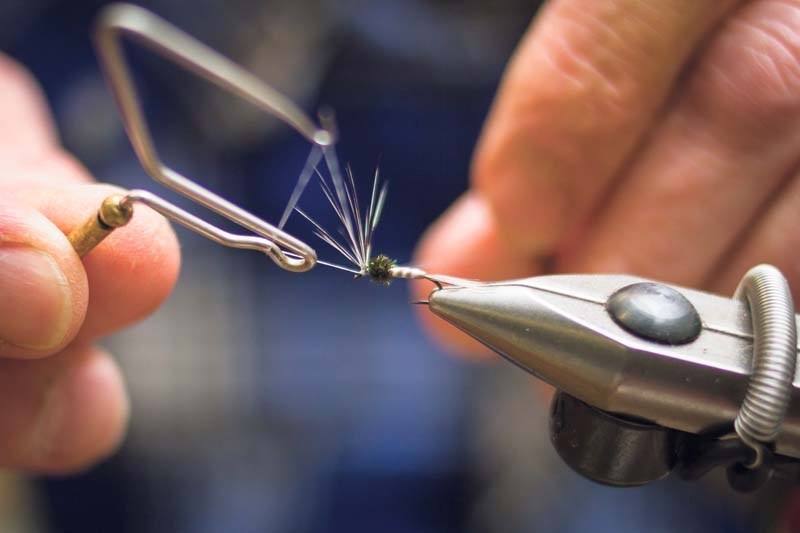It’s been said fly tying is the canvas on which the fly dresser composes his masterpieces – and the intricate designs made by the Cochrane Fly Tying Club confirm the art truly transcends the sport.
“It is … an artform,” said Mike Poettker, one of more than two dozen members of the organization. “Using different materials, you tie different patterns on the fish hook to imitate little things fish like to eat.”
Every Monday at 7 p.m., a group of fishers and fly tying fans gather in the basement of St. Peter’s Lutheran Church with a gaggle of unusual goods like partridge hackle, pulled deer hair, olive brown wool yarn and brown biots.
The troupe tackles a different challenge each week, fabricating everything from wooly buggers to worms, hare’s ear nymphs and clouser minnows. Some flies take just 15 minutes to put together – others can take days to complete a sophisticated, realistic piece.
“They’re like little baby mosquitoes. You’ve got yourself a tasty-looking snack,” said Poettker, as he carefully constructed mosquito larvae out of moose mane and rooster feather. “It’s fun. I find it just so relaxing and therapeutic … This is like arts and crafts.”
At another table, Tim Carlson examined his humble hook while his nine-year-old son, Solomon, gently separated peacock herl and patiently wrapped thread around his miniature canvas.
“I kind of think it’s satisfying to see all the colours you can put into one fly. It’s creative,” said Solomon. “I find it like a boys’ night out.”
Carlson learned how to tie flies while teaching up north more than a decade ago, and he said he loves now being able to share the art with his son. Carlson said the two also go fly fishing – which forces them to learn about nature and aquatic life in order to succeed.
“Fly fishing’s about what’s in the water and what the fish are eating,” he said, adding the process of triumph over trial and error is called matching the hatch. “You’re always trying to figure it out.”
The history of fly tying goes back to the Third Century AD and was likely first done by the Chinese. The intention of tying an artificial fly is to replicate a real fly or insect as closely as possible on the hairpin tip of a tiny hook, to draw in a certain type of fish.
Rick Quiring received his first fly tying kit when he was 12 years old, and has been dedicated to the art ever since. He teaches a few different classes around the region, and he led Poettker, the Carlsons, and the rest of the Cochrane group through the mosquito larvae demonstration.
“It’s a lifelong sport,” he said, while focused on his creation. “You can never be perfect at it.”



